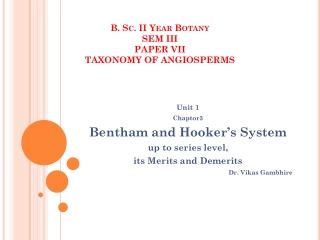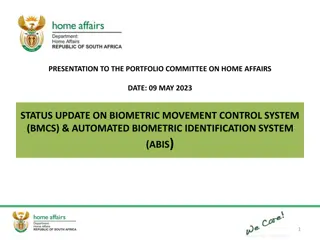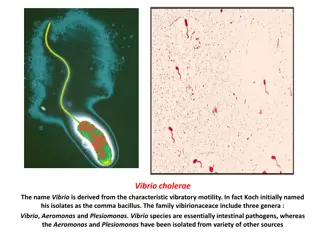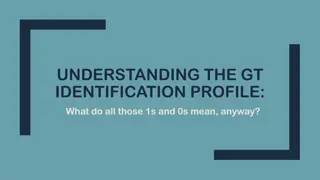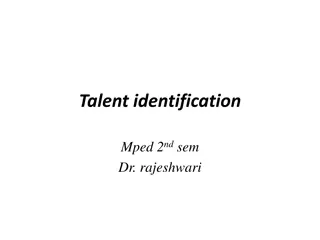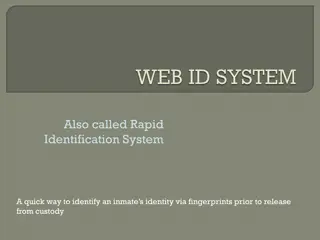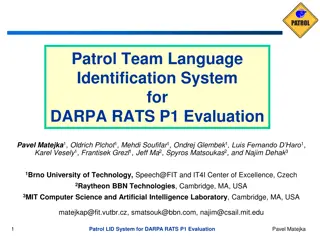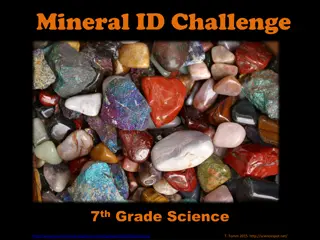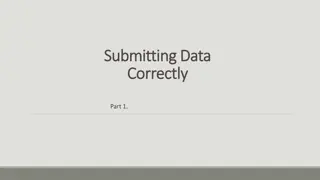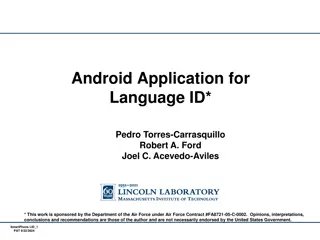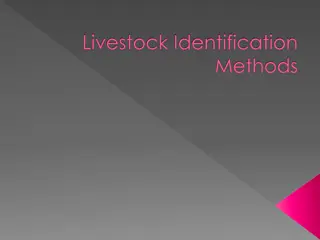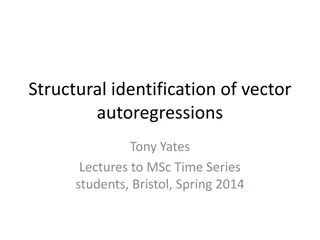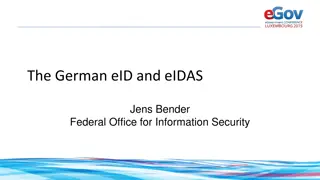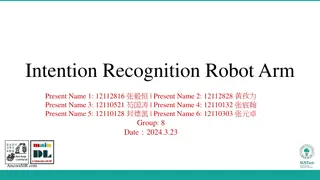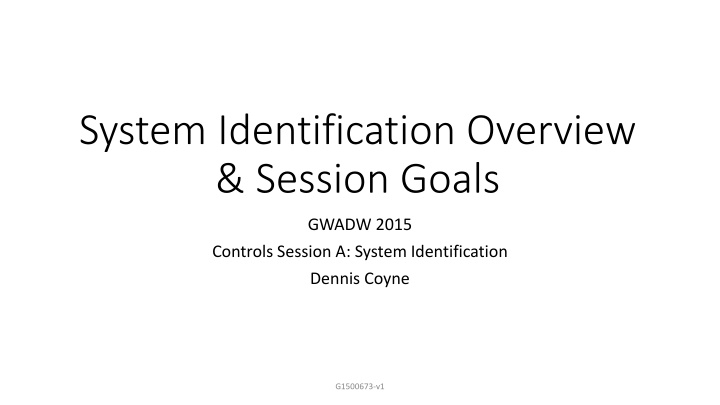
System Identification in Control Systems
System Identification (SID) is the process of developing a mathematical model of a physical system using experimental data. This involves building a model, designing experiments, collecting and analyzing data, and iteratively refining the model. SID offers insights into structural dynamics, modal parameter identification, and control model identification. Software tools like Matlab are commonly used for SID processes in control system engineering.
Download Presentation

Please find below an Image/Link to download the presentation.
The content on the website is provided AS IS for your information and personal use only. It may not be sold, licensed, or shared on other websites without obtaining consent from the author. If you encounter any issues during the download, it is possible that the publisher has removed the file from their server.
You are allowed to download the files provided on this website for personal or commercial use, subject to the condition that they are used lawfully. All files are the property of their respective owners.
The content on the website is provided AS IS for your information and personal use only. It may not be sold, licensed, or shared on other websites without obtaining consent from the author.
E N D
Presentation Transcript
System Identification Overview & Session Goals GWADW 2015 Controls Session A: System Identification Dennis Coyne G1500673-v1
What is System Identification (SID)? SID is the process of developing or improving a mathematical representation of a physical system using experimental data Black box or grey box (Physical insight must be used to develop the underlying model structure) Time domain and frequency domain Model reduction Plant, or plant + controller Open loop, closed loop Experiment design SID for structural dynamics Modal parameter identification (the focus of this talk) Structural-model parameter identification (motivation given in this talk) Control-model identification G1500673-v1
What does SID offer? Does adaptive control negate the need for SID? No; Adaptive techniques are essentially recursive identification algorithms applied to a specific model structure Does robust control design render SID obsolete? No; Robust control design requires a description of the model/plant uncertainty that SID can provide. G1500673-v1
SID Process Basic steps: Build a physics-based model Design the experiment Collect the data Select, filter, de-trend the data, as appropriate Fit the model Validate the model (compare prediction to data) Iterate until converged on a validated model Software tools: Matlab Sys ID Toolbox (Ljung) Matlab Frequency-Domain Identification (Kollar) Matlab System/Observer/Controller Identification Toolbox (SOCIT) G1500673-v1
SID for structural dynamics Modal parameter identification the focus of this talk Structural-model parameter identification motivation given in this talk Control-model identification G1500673-v1
Structural Modeling & SID SIGNAL FFTs REALIZATION (STATE SPACE) FILTERED DATA IMPULSE RESPONSE STRUCTURES SENSORS DISTURBANCES CONDITIONING WAVELETS REALIZATION PARAMETERS ACTIVE CONTROL MODELS/SYNTHESIS STRUCTURAL MODELS (M, D, K, modal representation, Nonlinearities) PHYSICAL MODEL MODIFICATION, REPAIR, MONITORING, ... (e.g. FINITE ELEMENT MODEL (FEM) Derived from a lecture on STRUCTURAL SYSTEM IDENTIFICATION USING SYSTEMS THEORY AND WAVELETS K. C. PARK Department of Aerospace Engineering Sciences and Center for Aerospace Structures, University of Colorado VIBRATION ISOLATION DESIGN CONTROL DESIGN DAMAGE DETECTION, ... G1500673-v1
Continuous-Time, Finite Dimensional, Linear Dynamic System Model G1500673-v1
Continuous-Time State-Space Model G1500673-v1
Discrete-Time, State-Space, Observer Model Since the state vector is (generally) not accessible, a state estimator (observer) is added: ? ? + 1 = ? ? ? + ??(?) ? ? = ? ? ? + ? ?(?) where ? = ? + ?? ? = [? + ?? ?] ?(?) ?(?) Discrete-time: ? ? + 1 = ? ? ? + ? ?(?) ? ? = ? ? ? + ? ?(?) k = 0, 1, 2, where ? = ??? ? ? ??? ? ?? ?? ? = 0 ? ? = Ac, Bc are the continuous versions G1500673-v1
System Realization Theory Construct a model with controllability & observability Seek a minimum realization (smallest state space dimensions) Time domain models for modal parameter identification are based on the transfer function matrix, which yields Markov parameters (i.e. pulse response) ? ? + 1 = ? ? ? + ? ?(?) ? ? = ? ? ? + ? ?(?) Let ??0 = 1 ? = 1,2, ,? and ??? = 0 ? = 1,2, Pulse response matrix Y (m x r): ?0= ?; ?1= ??; ?2= ???; ; ??= ??? 1? where Y are the Markov parameters A realization is the computation of the triplet [A, B, C] (D = Y0) G1500673-v1
System Realization Theory The triplet [A, B, C] can be transformed into modal parameters by computing the eigenvectors, ? = {?1,?2, , ??}, with the corresponding eigenvalues, ? = {?1,?2, , ??}, of matrix A Transform to realization ? ? 1? ?? Diagonal Matrix ? contains the modal damping rates and damped natural frequencies Re & Im parts of ??= ln ? / ? Mode Shapes at the sensor locations Initial Modal Amplitudes G1500673-v1
Eigensystem Realization Algorithm (ERA) PULSE-RESPONSE FUNCTIONS (MARKOV PARAMETERS) HANKEL MATRIX, H(0) The Hankel matrix is formed from the Markov parameters ?? ??+1 ??+? 1 ERA is a least squares fit to the pulse response measurements Variant ERA/DC with Data Correlations Fit to the output auto-correlations and cross-correlations over a finite number of lag values Juang, J. et. al., An eigensystem realization algorithm using data correlations (ERA/DC) for modal parameter identification , Control Theory and Advanced Technology, v4,n1,1988. LEFT SINGULAR VECTORS SINGULAR VALUES RIGHT SINGULAR VECTORS ??+1 ??+? 1 ? ? 1 = ??+2 TIME-SHIFTED HANKEL MATRIX, H(1) ??+?+? 2 OUTPUT MATRIX STATE MATRIX INPUT MATRIX EIGENSOLUTION NATURAL FREQUENCIES AND MODAL DAMPING MODE SHAPES MODAL AMPLITUDES REDUCED MODEL VALADATION (RECONSTRUCTION & COMPARISON WITH DATA) G1500673-v1
Other SID Techniques Ultimately we seek a recursive, real-time parameter identification of our MIMO systems (at their operating states) Many techniques are available; Potential candidates include: Generalized Least Squares and Maximum Likelihood Estimators (e.g. the Prediction Error Method) are computationally simple Observer/Kalman Filter ldentification (OKID) -- time domain based, can be extended to identification of closed loop effective controller/observer combination (Observer Controller ldentification, OCID) State-Space Frequency Domain (SSFD) identification techniques G1500673-v1
How and what to measure modal testing Frequency Response Function (FRF) is the Fourier transform of an impulse or pulse response sequence (Markov parameters) Typically the FRFs are computed before application of a SID technique However many SID tools can analyze the free or forced response time histories directly G1500673-v1
SID Session Goals Compare techniques Share experiences Exchange tools and ideas Define a road map for application to our systems and further research Explore the state of the art, new tools Define suitable problems/applications Define upgrades & next generation system targets (early stages of testing and commissioning) A new GW working group? Host a wiki page? Meet virtually on some cadence? G1500673-v1

